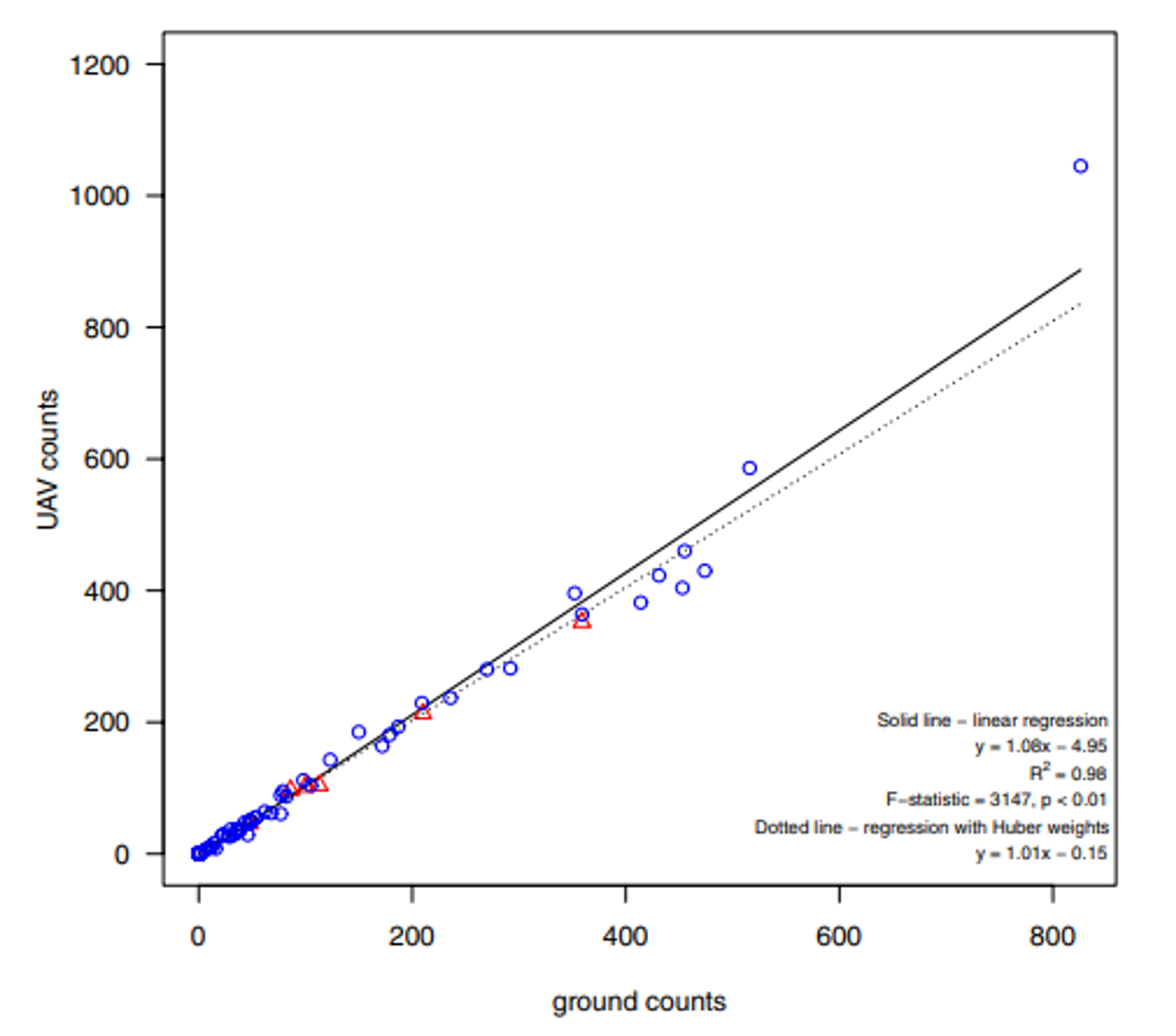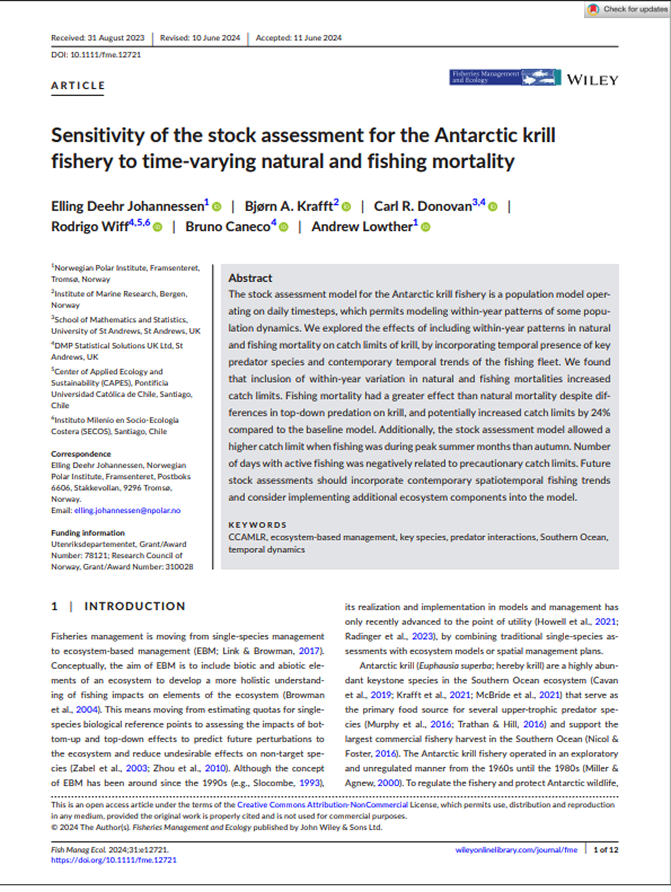Biomass
Antarctic ecosystem
Un-crewed aerial vehicle population survey of three sympatrically breeding seabird species at Signy Island, South Orkney Islands
Summary
Drone surveys provide an accurate method for counting seabird populations in Antarctica with minimal disturbance to wildlife compared to traditional ground-based surveys. The study validated drone methodology against ground counts at Signy Island for three seabird species. Drone counts were generally within 5% of ground counts, with high-resolution images allowing researchers to distinguish between similar penguin species. The study confirmed ongoing population trends: declining chinstrap penguins (70% decline since the 1970s) and increasing gentoo penguins (approximately 150% increase). Drones offer advantages including reduced disturbance to wildlife, permanent photographic records, and access to previously unreachable areas. The methodology provides a valuable tool for long-term seabird monitoring in polar regions.

1
Comparison of penguin colony counts using drone surveys (y-axis) versus traditional ground counts (x-axis) at Signy Island. Blue circles show Chinstrap penguin colonies and red triangles show Gentoo penguin colonies. The close alignment along the diagonal line demonstrates that both counting methods produce nearly identical results, validating drones as an accurate alternative to ground-based surveys.Key Findings
1
Drone counts were within approximately 5% accuracy of ground counts for all three seabird species.2
High-resolution images taken from 35 meters altitude were sufficient to distinguish between similar penguin species.3
Population trends were confirmed: Chinstrap penguins continue declining (70% decrease since 1970s) while Gentoo penguins continue increasing (~150% growth).4
Drones enabled access to previously unreachable offshore islands for population surveys.

